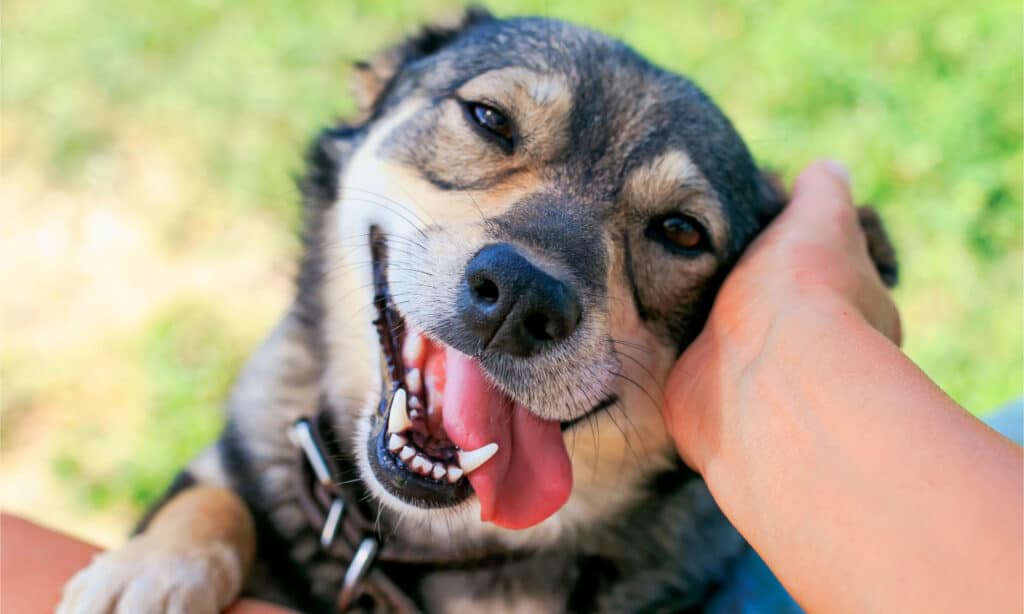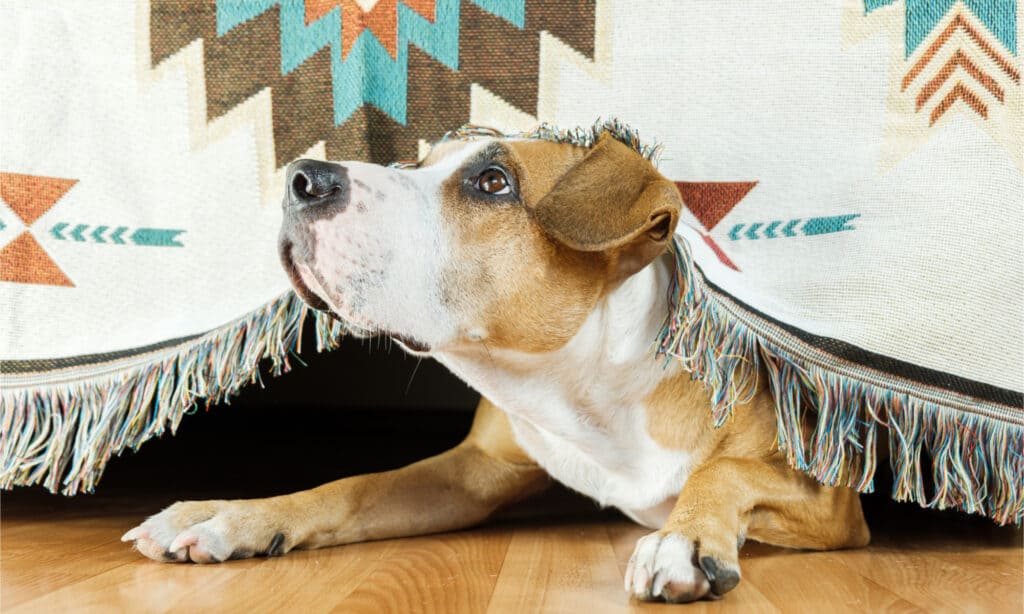Our four-legged friends may not be able to verbally nag us, but they are able to make a noise that humans find very hard to ignore. It is called – whining! We tend to have mixed feelings about whining. To begin with, it seems quite cute but when it goes on for a while it can become intensely annoying which is, of course, the whole point! Humans are not meant to be able to ignore the whining. But why do dogs whine and what does it mean? As with the other forms of dog communication, it can mean a number of things ranging from wanting something to being in pain. Here’s a complete list of why your dog may be whining and our guide on how to tackle it in 8 easy steps.
Why Do Dogs Whine?
Whining is generally a high-pitched and prolonged vocalization that is distinct from other types of noises that dogs can make like barking and howling. It also tends to go on for some time. Or at least until you do something about it.
You may be able to work out what your dog is saying from other clues like their body language. So, whining and staring at the door probably means they need to go outside for a potty break. Here are the main reasons that dogs whine.

Most dogs won’t bring you their leash when they want to go out. Instead, they resort to whining.
©Tanya Kalian/Shutterstock.com
Your Dog Wants Something
This is both the most obvious and the most common cause of whining. It is also usually the easiest to fix. Perhaps their ball is stuck under a sofa or they want need to go outside for a pee? You can read their body language to know what is causing the whining and once you have sorted the problem out, the whining should cease. In canine psychology, this is explained by your dog expressing their frustration with the ball (because it is stuck where they cannot reach it) or the door (because they cannot open it).
The problem here is by that racing in and sorting out the problem, you are re-enforcing the behavior and could be making it worse. However, by not responding you are not looking after your dog’s needs so there is a fine line that you have to follow.
What You Can Do About It
Regular potty breaks are a good idea. If your dog whines just after they have been out, you can be confident that it is safe to ignore them. Adult dogs can go for several hours between having a pee. You could install a dog flap if you have a secure garden and are happy for your dog to let themselves out. If your dog is clearly very distressed about needing to go outside, it may have a bladder problem or a stomach upset and you may need to consult your vet.
Regular mealtimes with measured amounts of wet or dry food and no snacking in-between meals also help. Dogs like routine and will soon learn their feeding schedule. They will also learn that whining between meals is pointless.
Don’t do anything that will encourage whining like feeding your dog from the table when you are eating. This makes mealtimes very stressful. To break this habit, you can start putting your dog in a crate whilst you eat.
Attention Seeking Behavior
Dogs thrive on human attention and if they don’t get it, they soon let you know! A more generalized type of whining that does not have an obvious cause may be a ploy to get your attention. Little children have been known to employ the same tactics! Your dog is behaving like a bored little child. There can also be an element of jealousy if you are spending what they think is too much time with another pet, another person, or on another task.
Dogs tend to whine more if they do not receive enough mental or physical stimulation. They are essentially bored and bored dogs get up to all sorts of mischief. They can end up chewing the sofa or digging up the lawn.

Dogs often whine to get their owner’s attention.
©Bachkova Natalia/Shutterstock.com
What You Can Do About It
Give your dog something to do! Let’s say you know that you have an important work call or video conference lined up. You need to get organized beforehand to stop your dog from trying to get involved with incessant whining. Preferably, put your dog in a part of your home where they cannot hear you – they may need to be in a crate. Play some music near them so that they cannot hear you very well. Provide some interactive toys that will keep them busy for a while. When you go back to see them, praise them for being so good!
When you are not busy with work or household chores make sure that you dedicate plenty of time to your pet. Spend some quality time together playing games and teaching them new tricks. Dogs love to learn new things!
It Can Be Fear or Anxiety
Whining that is accompanied by trembling, pacing, or panting is usually a sign that your dog is stressed or frightened about something. At the same time, your dog will display some appeasement gestures which can include licking its lips and yawning. This can be triggered by so many things ranging from a new pet in the home or their favorite human going away for a while.
Separation anxiety is a particular type of stress that dogs suffer when they are left alone in the house. So when they see you getting ready to leave, they will express their anxiety by whining.
A frightened dog is more likely to be cowering and have flattened ears and a tucked tail at the same time as whining.

Whining can be a sign that your dog is anxious or afraid.
©Aleksey Boyko/Shutterstock.com
What You Can Do About It
Start by identifying what is causing the fear or anxiety. If there is something obvious, like a thunderstorm, you could try playing some soothing music or offering some calming treats.
Separation anxiety requires counterconditioning techniques where you expose your dog very gradually to what makes them anxious. So, for example, if your dog whines when you pick up your car keys, this is the trigger that you will work on. You will pick up your keys when you don’t need to leave the house and then put them straight back down again. You will build up to walking out of the door but coming straight back in and eventually leaving the house for short periods. Over weeks and months, your dog will feel less anxious because they will learn that you always come back.
Pain and Injury
This is the most serious cause of whining and is something that you should never ignore. Dogs whine in response to pain and to not feeling very well. Look for other signs that your dog is in discomfort. Do they whine when they move around? It could be caused by joint pain and this is commonly caused by arthritis in older dogs. Is it triggered by them eating or pooping? You may notice that they also have vomiting and/or diarrhea.
What You Can Do About It
Dogs that are obviously in pain or are ill need to be seen by a vet. Also, if you have ruled out all the other causes of your dog’s whining it is probably a sign that they are ill and you need to talk to your vet about it to investigate medical causes.
Submissive Behavior
In the wild, dogs lived in a hierarchical society and all of their social interactions are about who is dominant and who is submissive. Whining can be a sign of submission. It may be a way of them showing that you are in charge. It can also be a way of saying sorry if they have done something wrong – it’s called appeasement whining. If this is the reason for your dog’s whining, they will also have their tail between their legs and will look guilty. They are essentially begging you to let them back into the pack.
What You Can Do About It
Appeasement whining is normal canine behavior but if it is becoming excessive you need to take steps to build your dog’s confidence. Obedience classes can help as can playing games together. Never physically or verbally punish your dog or intimidate them as this can trigger appeasement whining.
Excitement
Dogs get excited for lots of reasons! It could be a game that they love or the anticipation that they are going out for a walk. Many dogs get very excited when a visitor arrives at the house and this can be problematic if the whining gets out of control.
What You Can Do About It
You need to teach your dog to do something calm when they hear the doorbell. This could be going to sit in their bed. You could also teach them to greet visitors by hand targeting rather than racing around whining. It is a gradual process that involves rewarding your dog for touching a palm with their nose in a calm way. It can take several months to perfect but is worth it!
Stop Whining in 8 Easy Steps
Still not sure what is causing your dog’s whining? Follow these 8 steps to get to the bottom of it.
- Listen carefully to the whine and observe other behavior. You may be able to distinguish a “hungry” whine from a “boredom” whine.
- Approach your dog and try to touch them whilst looking for other signs that they are ill or in pain. Dogs in pain may avoid contact or may show aggression. If your dog is ill, call the vet.
- Work through the potential reasons above, eliminating them one by one. Then respond as we have listed above. Only respond to genuine needs for food, water, and potty breaks.
- Work on potential fears and phobias with counterconditioning techniques to desensitize them.
- Don’t encourage whining. Once you have responded to what they need, encourage your dog to lie down quietly. Do not respond again to the whining but reward them when they sit quietly.
- Do not get angry or punish your dog.
- Provide an enriching environment and lifestyle with lots of mentally and physically challenging activities for your dog.
- Teach the “quiet” command so they know when enough is enough!
The photo featured at the top of this post is © Tagwaran/Shutterstock.com
Ready to discover the top 10 cutest dog breeds in the entire world?
How about the fastest dogs, the largest dogs and those that are -- quite frankly -- just the kindest dogs on the planet? Each day, AZ Animals sends out lists just like this to our thousands of email subscribers. And the best part? It's FREE. Join today by entering your email below.
Thank you for reading! Have some feedback for us? Contact the AZ Animals editorial team.






